Climate and environmental concerns have now reached the top of political agenda across the EU and entail a world of change for building and construction sectors. Buildings account for over a third of EU CO2 emissions and have been identified as a priority in decarbonisation efforts. Adding to the climate crisis, we are now also facing a health and economic crisis.
In response to these twin challenges, European policymakers have decided to put renovations at the center of the immediate answer to both crises. With the “Renovation Wave”, the aim is to at least double renovation rates across the EU, kickstarting the recovery fo the construction sector and leading to more energy efficient buildings.
The shift towards sustainable buildings will be underpinned by widespread digitalisation of the built environment. Smart and digital buildings are the keystone for energy management, demand response and decentralised energy services.
And this is where technologies such as Power over Ethernet (PoE) come into play. PoE is particularly interesting in this regard as it allows for the transmission of both electricity and data on the same cable. With PoE, electrical and Internet of things devices can be powered and managed simultaneously. Further, this will also allow for better communication between smart devices and facilitated data harvesting.
One simple example of how PoE can lead to more efficiency is the reduced need for AC/DC conversions. PoE enables the direct transmission of DC power to electric devices, meaning that power converters, such as the ones you’ll find on your computer’s charger or inside your TV, are not needed anymore. Further, there is no need to invert power from onsite renewables in view of self-consumption, adding to the efficiency gains.
PoE installations offer a wider breath of benefits:
- PoE installations require 20-30% less copper
- PoE allows for continuous measurements of performance leading to regular efficiency improvements
- Continuous monitoring also enables better anticipation and maintenance of installations
- Buildings with PoE are better suited to accommodate Building Automation and Control System and energy management retrofits
- Reduced AC/DC conversions lead to more energy efficiency
- Increased fire safety for occupants
- Facilitates the prosumer model and smart energy solutions
With the PoE market poised to grow exponentially in the next years, fuelled by building digitalisation and efficiency measures, EuropeOn has released a comprehensive installation guide for its members.
Our French member FFIE, lead authors of the guide, have released a short presentation video (in French).
For an English version, have a look at this webinar held by our English member, ECA, for their member companies.

